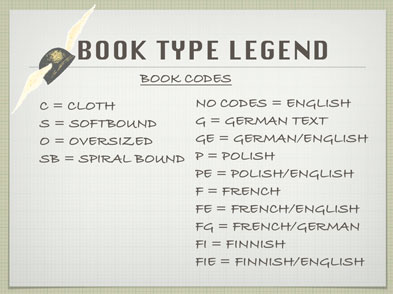
PRODUCT SEARCH
Free Shipping on orders of 8 or more books.
Applies to US Shipments only.
|
Shopping cart is empty.
|
BARBAROSSA DERAILED THE BATTLE FOR SMOLENSK 10 JULY - SEPTEMBER 1941 VOLUME 2: THE GERMAN ADVANCE ON THE FLANKS AND THE THIRD SOVIET COUNTEROFFENSIVE 25 AUGUST - 10 SEPTEMBER 1941
Book Type: C by David Glantz, 456 pages, 40 b/w photos, 50 maps At dawn on 10 July 1941, massed tanks and motorized infantry of German Army Group Center's Second and Third Panzer Groups crossed the Dnepr and Western Dvina Rivers, beginning what Adolf Hitler, the Führer of Germany's Third Reich, and most German officers and soldiers believed would be a triumphal march on Moscow, the capital of the Soviet Union. Less than three weeks before, on 22 June Hitler had unleashed his Wehrmacht's [Armed Forces] massive invasion of the Soviet Union code-named Operation Barbarossa, which sought to defeat the Soviet Union's Red Army, conquer the country, and unseat its Communist ruler, Josef Stalin. Between 22 June and 10 July, the Wehrmacht advanced up to 500 kilometers into Soviet territory, killed or captured up to one million Red Army soldiers, and reached the western banks of the Western Dvina and Dnepr Rivers, by doing so satisfying the premier assumption of Plan Barbarossa that the Third Reich would emerge victorious if it could defeat and destroy the bulk of the Red Army before it withdrew to safely behind those two rivers. With the Red Army now shattered, Hitler and most Germans expected total victory in a matter of weeks. The ensuing battles in the Smolensk region frustrated German hopes for quick victory. Once across the Dvina and Dnepr Rivers, a surprised Wehrmacht encountered five fresh Soviet armies. Despite destroying two of these armies outright, severely damaging two others, and encircling the remnants of three of these armies in the Smolensk region, quick victory eluded the Germans. Instead, Soviet forces encircled in Mogilev and Smolensk stubbornly refused to surrender, and while they fought on, during July, August, and into early September, first five and then a total of seven newly-mobilized Soviet armies struck back viciously at the advancing Germans, conducting multiple counterattacks and counterstrokes, capped by two major counteroffensives that sapped German strength and will. Despite immense losses in men and materiel, these desperate Soviet actions derailed Operation Barbarossa. Smarting from countless wounds inflicted on his vaunted Wehrmacht, even before the fighting ended in the Smolensk region, Hitler postponed his march on Moscow and instead turned his forces southward to engage "softer targets" in the Kiev region. The 'derailment" of the Wehrmacht at Smolensk ultimately became the crucial turning point in Operation Barbarossa. This groundbreaking new study, now significantly expanded, exploits a wealth of Soviet and German archival materials, including the combat orders and operational of the German OKW, OKH, army groups, and armies and of the Soviet Stavka, the Red Army General Staff, the Western Main Direction Command, the Western, Central, Reserve, and Briansk Fronts, and their subordinate armies to present a detailed mosaic and definitive account of what took place, why, and how during the prolonged and complex battles in the Smolensk region from 10 July through 10 September 1941. The structure of the study is designed specifically to appeal to both general readers and specialists by a detailed two-volume chronological narrative of the course of operations, accompanied by a third volume, and perhaps a fourth, containing archival maps and an extensive collection of specific orders and reports translated verbatim from Russian. The maps, archival and archival-based, detail every stage of the battle. Within the context of Guderian's southward march toward the Kiev region, volume 2 in this series describes in unprecedented detail the Red Army's attempts to thwart German offensive plans by defeating Army Group Center in the Smolensk region with a general counteroffensive by three Red Army fronts. This volume restores to the pages of history two major military operations which, for political and military reasons, Soviet historians concealed from view, largely because both offensives failed. This volume includes: The Northern Flank: Group Stumme's (Third Panzer Group) Advance to Velikie Luki, Toropets, and Zapadnaia Dvina, 22 August-9 September 1941; German Strategic Planning, the Tilt toward Kiev, and Second Panzer Group's Advance Across the Desna River, 22-28 August 1941; The Third Soviet Counteroffensive, including the Western Front's Dukhovshchina Offensive, 26 August-6 September1941, the Reserve Front's El'nia Offensive, 30 August-10 September 1941, and the Briansk Front's Roslavl'-Novozybkov Offensive, 29 August-14 September 1941. Based on the analysis of the vast mass of documentary materials exploited by this study, David Glantz presents a number of important new findings, notably: Soviet resistance to Army Group Center's advance into the Smolensk region was far stronger and more active than the Germans anticipated and historians have previously described; The military strategy Stalin, the Stavka, and Western Main Direction Command pursued was far more sophisticated than previously believed; Stalin, the Stavka, and Timoshenko's Western Main Direction Command employed a strategy of attrition designed to weaken advancing German forces; This attrition strategy inflicted far greater damage on Army Group Center than previously thought and, ultimately, contributed significantly to the Western and Kalinin Fronts' victories over Army Group Center in December 1941. 
|


